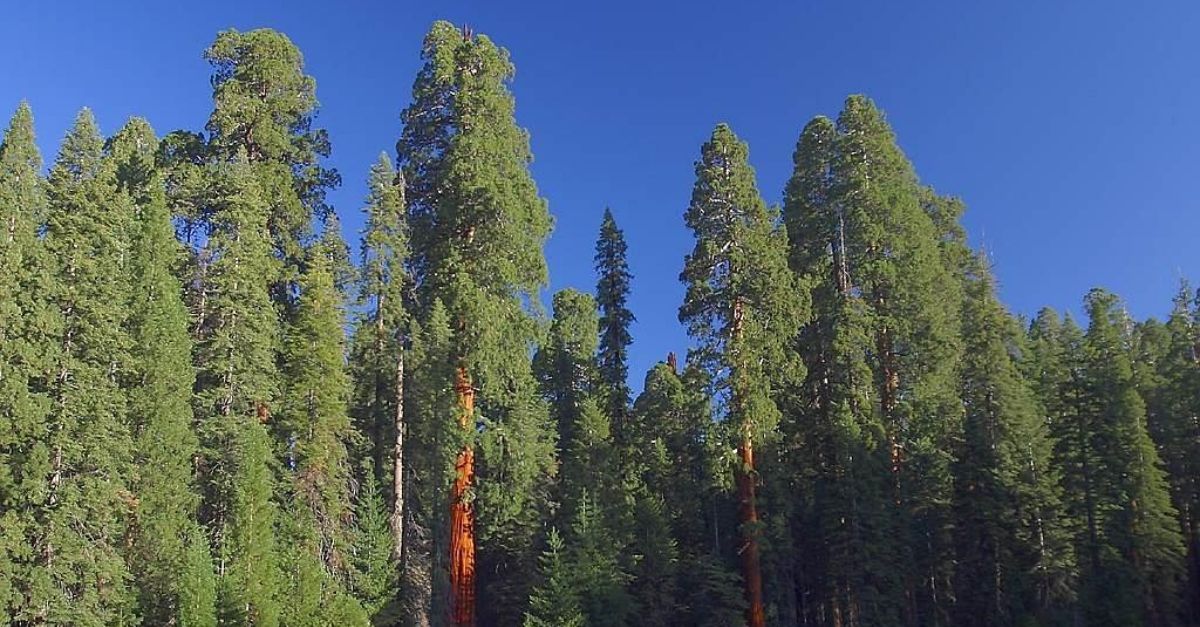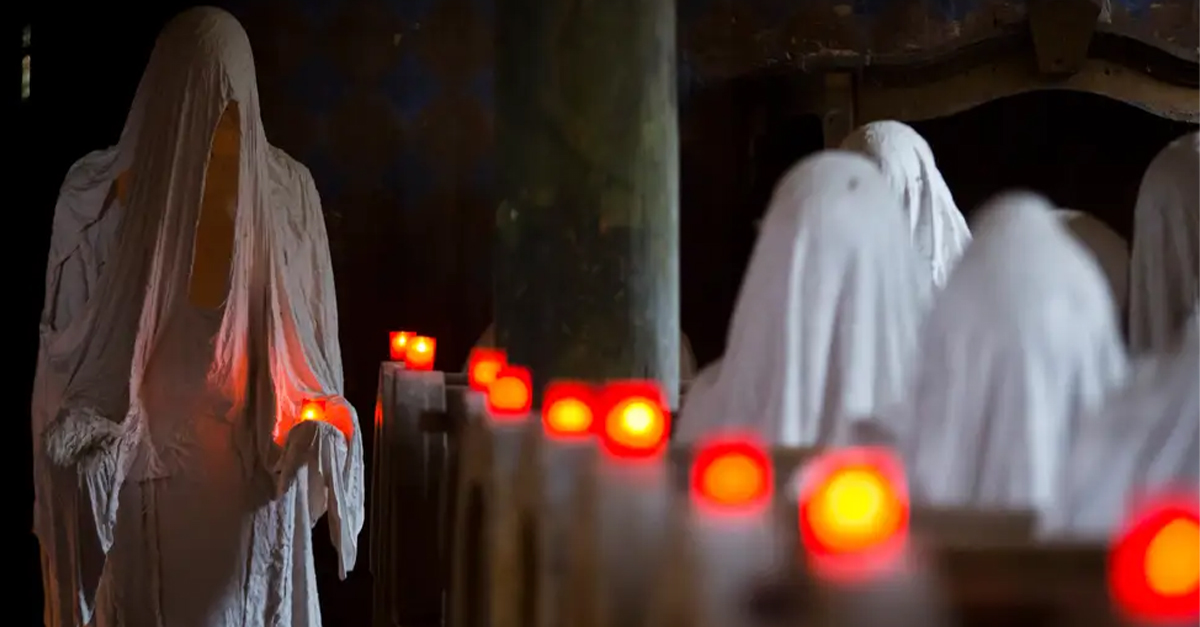Hidden Remains Within Giant Tree
A routine study in California’s ancient forests took a surprising turn when scientists uncovered human remains inside the world’s largest tree. The discovery sparked a deep investigation, unraveling a long-lost story entwined with the history of the land.
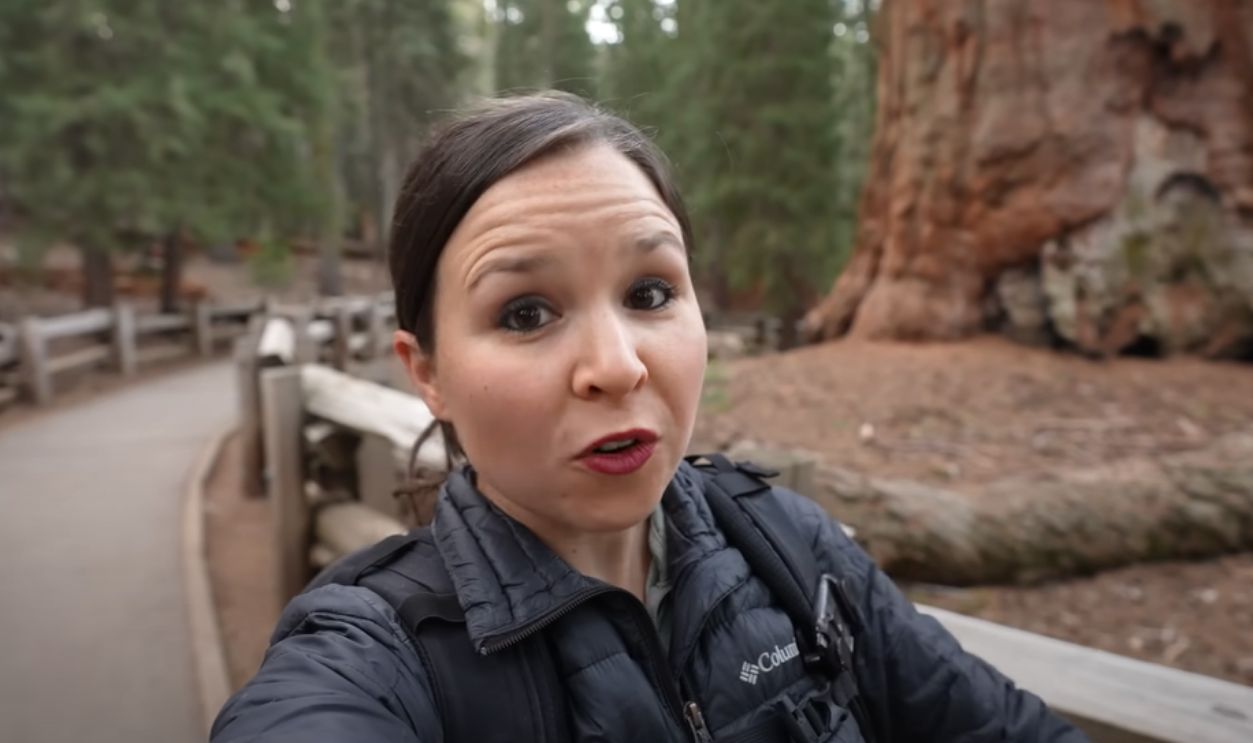
Forest Mystery
In the heart of California’s ancient redwood forests, where massive trees have watched over the land for thousands of years, a team of scientists set out on what seemed like just another research trip. Leading the way was the adventurous biologist, Dr Harper Thorne, ready to uncover nature’s secrets.
 Kevin Casper, CC0, Wikimedia Commons
Kevin Casper, CC0, Wikimedia Commons
The General Sherman Tree
They had no idea that their journey would uncover something so groundbreaking that it might change the way we see history forever. They discovered bones inside the giant General Sherman tree. There is more you are about to learn.
 Jim Bahn, CC BY 2.0, Wikimedia Commons
Jim Bahn, CC BY 2.0, Wikimedia Commons
Assessing Sequoia Health Risks
Dr Thorne and her team were tasked by the government to check on the health of one of these massive sequoias. With wildfires growing more intense and the environment rapidly changing, keeping an eye on these ancient trees has become more important than ever.
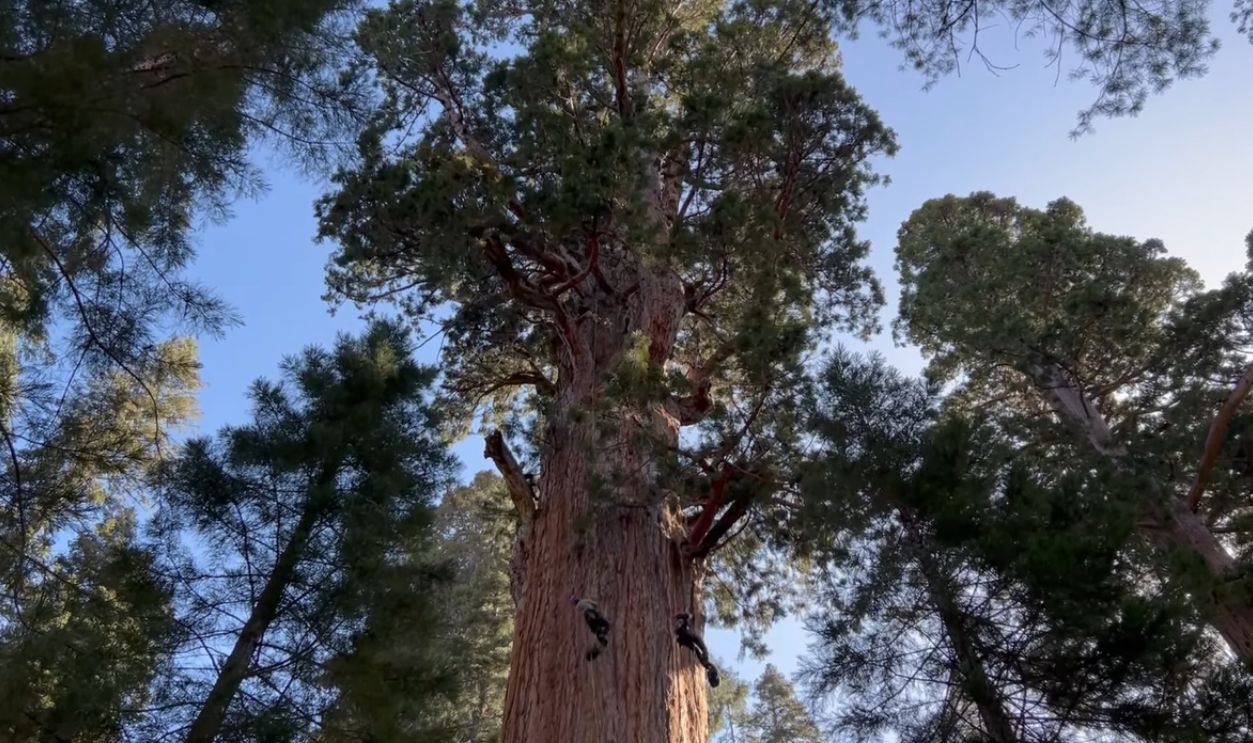 General Sherman Tree health check by Save the Redwoods League
General Sherman Tree health check by Save the Redwoods League
Journey Into The Ancient Forest
The team gathered at the forest’s edge, loading their gear into the vans before setting off. As they drove deeper into the ancient woods, the sequoias rose higher around them, their immense trunks and sprawling branches even more breathtaking up close.
 Sequoias Feel the Drought | KQED Newsroom by KQED News
Sequoias Feel the Drought | KQED Newsroom by KQED News
Assessing A Giant’s Resilience
As soon as the team arrived at their assigned tree, General Sherman, they got to work. The aftermath of recent storms was evident, with many nearby trees damaged or completely knocked down. At first glance, their subject appeared unharmed, but they knew a closer inspection was necessary.
Unexpected Discovery In Sequoia
Dr Thorne set out on a routine check of the tree’s perimeter, scanning for any signs of damage or disease. As she rounded the other side, she suddenly froze. Carved into the massive trunk was a deep and gaping wound. It was wide enough for a person to step through.
Uncovering A Sequoia’s Wound
This was highly unusual, considering sequoias are known for their incredible resilience. Curious and concerned, the team gathered around to take a closer look. The evidence suggested that a mix of storm damage and possibly a fallen neighboring tree had caused the deep wound.
Entering The Giant’s Wound
Sequoias are natural survivors with the ability to heal themselves by growing bark over wounds to prevent infection. But this gash was unusually large, and it raised concerns. With specialized tools in hand, the team carefully stepped inside and made sure not to cause any further harm to the ancient giant.
Discovering A Hidden Chamber
Inside, they found a hidden chamber, a hollow space that had likely formed over centuries as the tree grew around an empty pocket. These hollows aren’t unusual in ancient trees and can develop through natural processes like decay, fire, or shifting growth patterns.
Ancient Bones Within Sequoia
What truly took their breath away was what they found inside, which was a collection of bones, partially engulfed by the tree’s wood. Over the years, the tree had grown around them as if cradling them in a quiet, protective embrace.
Questions To Be Answered
The team meticulously documented the site with photos and the collection of samples for further study. The biggest questions loomed, who or what did these bones belong to? How had they ended up inside the tree? And what secrets might they reveal about the history of this ancient forest?
Seeking Answers In Tree Rings
Dr Thorne contacted experts in archaeology, paleontology, and dendrochronology to help solve the mystery. Dendrochronology, the study of tree rings, could offer a precise timeline, potentially revealing when the tree began growing around the bones and providing important clues about their origin.
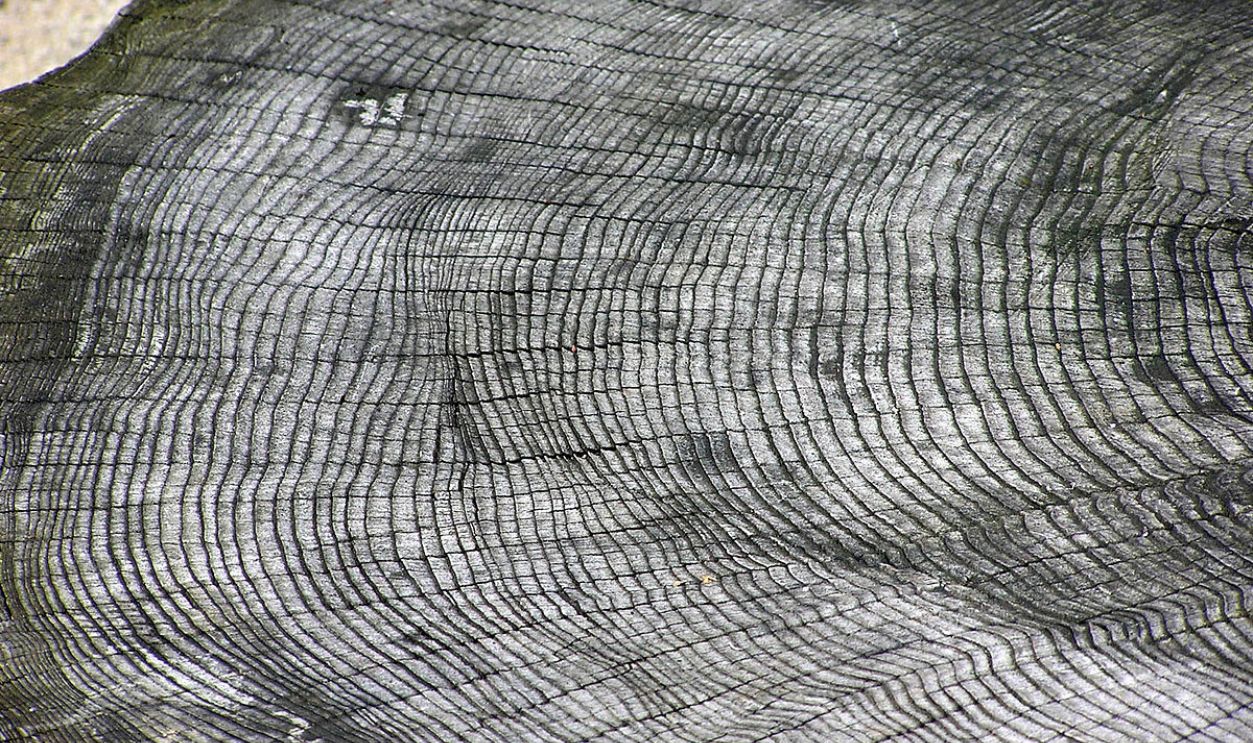 Arpingstone, Wikimedia Commons
Arpingstone, Wikimedia Commons
Dating The Enclosed Remains
By studying the tree’s growth rings around the area where the bones were found, the team hoped to pinpoint when the tree began enclosing them. Early findings suggested the bones were incredibly old, possibly dating back to a time before European settlers arrived in the region.
Science Vs Preservation Dilemma
The team faced a tough dilemma. Removing the bones for study could reveal important historical insights, but it might also damage the ancient tree. On the other hand, leaving them in place would protect the tree but limit their ability to fully understand the remains’s origins and significance.
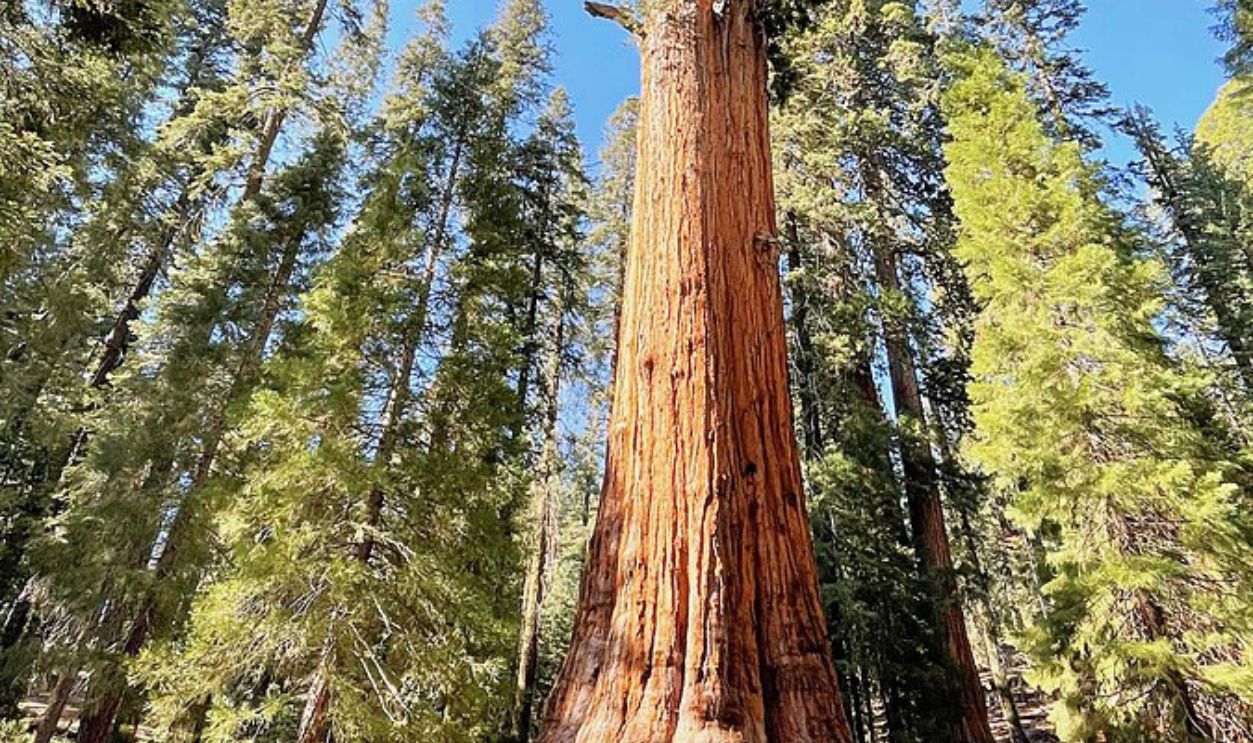 Marty Aligata, CC BY-SA 4.0, Wikimedia Commons
Marty Aligata, CC BY-SA 4.0, Wikimedia Commons
Scanning Reveals Human Burial
They opted for a non-invasive approach initially, using imaging technology to study the bones without disturbing the tree. This allowed them to create detailed 3D models of the remains. The scans revealed something astonishing, the bones were human, and their placement suggested a deliberate burial rather than a random occurrence.
 Creative Tools from Halmdstad, Sweden, CC BY 2.0, Wikimedia Commons
Creative Tools from Halmdstad, Sweden, CC BY 2.0, Wikimedia Commons
Burial Practice Or Something Else?
This discovery sparked even more questions. Could this be evidence of an ancient burial practice previously unknown? Or was there another explanation for how the remains became encased in the tree? To find answers, the team turned to historical records and Indigenous oral histories.
Legends Of Shelter And Survival
The team consulted local Native American tribes, and none had specific burial traditions involving trees. However, they did share stories of people seeking shelter in hollow trees during times of conflict or disaster. This opened new possibilities.
 Unknown Author, Wikimedia Commons
Unknown Author, Wikimedia Commons
Balancing Science And Respect
It’s possible the person had entered the tree for shelter and never made it out for unknown reasons. As the investigation continued, the team remained mindful of the cultural and ethical sensitivities surrounding the discovery. They worked closely with Indigenous representatives to ensure that every step taken was respectful.
Indigenous Cultural Practices
The discovery provided a rare glimpse into the past, raising new questions about the lives of those who once walked these forests. Driven by curiosity and respect, Dr Thorne and her team deepened their research into Indigenous cultural practices, particularly any burial traditions that might have involved trees.
Ancient Traditions Of Tree Burials
Although initial consultations with local Native American tribes did not reveal any traditions of placing bodies within living trees, further research showed that various cultures globally have practiced arboreal burials. In some North American regions, certain Indigenous tribes practiced tree burials, placing the deceased in trees or on raised platforms.
 Ulrich Lange, Dunedin, New Zealand, CC BY-SA 3.0, Wikimedia Commons
Ulrich Lange, Dunedin, New Zealand, CC BY-SA 3.0, Wikimedia Commons
Ancient Traditions Of Tree Burials (Cont.)
This practice, called excarnation, involved allowing the body to decompose naturally before the bones were gathered for final burial. It served both spiritual and practical purposes, aiding the soul’s journey while protecting the remains from scavengers.
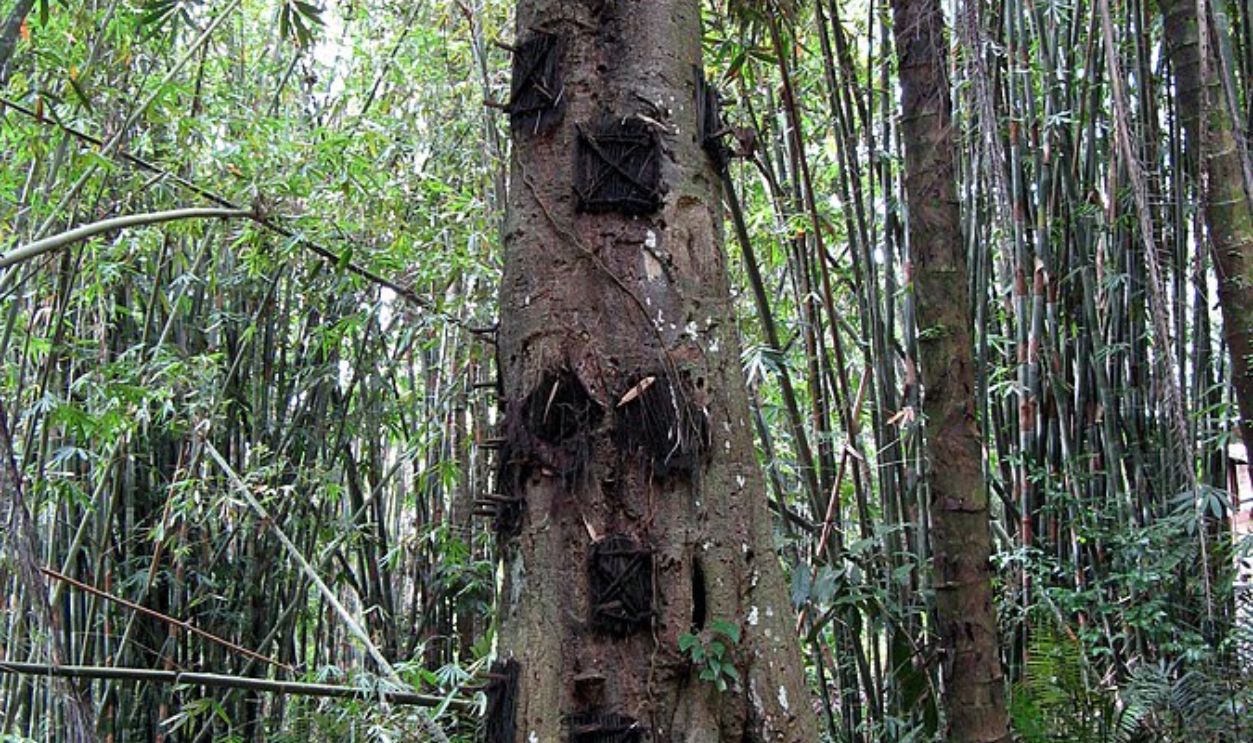 Michael Gunther, CC BY-SA 4.0, Wikimedia Commons
Michael Gunther, CC BY-SA 4.0, Wikimedia Commons
Ancient Burials Within Trees
The team also investigated the practice of tree trunk coffins, a burial method found in multiple cultures. These coffins are carved from single logs and have been discovered in regions such as Europe, Africa, Asia, and Australia.
 BabelStone, CC BY-SA 3.0, Wikimedia Commons
BabelStone, CC BY-SA 3.0, Wikimedia Commons
Ancient Burials Within Trees (Cont.)
In Bronze Age Britain, individuals were sometimes buried in hollowed-out tree trunks, a practice that highlights the symbolic importance of trees in burial customs. These findings led the team to consider the possibility that the person found within the Sequoia was placed there as part of an intentional burial practice.
 Bullenwachter, CC BY-SA 3.0, Wikimedia Commons
Bullenwachter, CC BY-SA 3.0, Wikimedia Commons
Mapping Secrets Within The Tree
To develop a more complete understanding, the team used advanced imaging techniques, including ground-penetrating radar and 3D laser scanning, to map the tree’s internal structure and the placement of the remains. These non-invasive techniques enabled the team to examine the site without damaging the ancient Sequoia.
 Unknown Author, Wikimedia Commons
Unknown Author, Wikimedia Commons
Mapping Secrets Within The Tree (Cont.)
The results indicated that the remains could be of one of these groups. Additional tests revealed that the tree had begun to grow over the remains soon after they had been deposited, and the growth gradually enveloped them over time.
 The Charles Machine Works, CC BY-SA 2.0, Wikimedia Commons
The Charles Machine Works, CC BY-SA 2.0, Wikimedia Commons
Debating A Unique Discovery
This natural process led to the unusual preservation of the bones within the living tree. The team’s findings were met with a mix of curiosity and skepticism in the scientific community. Some scholars urged caution in interpreting the results, pointing out the lack of direct evidence for tree-based burial practices.
Honoring History Through Research
Others saw the discovery as a possible sign of previously undocumented cultural practices. Acknowledging the cultural sensitivity of their findings, Dr Thorne and her team remained in close collaboration with Indigenous representatives and strived to ensure that their research respected the traditions of the communities whose ancestors once lived here.
Alternative Explanations
Throughout the investigation, the team also explored other reasons behind how the remains ended up inside the tree. Among those was that the individual had used a hollowed-out tree to take shelter in and perished there due to unknown reasons.
Interpreting An Enigmatic Burial
Another theory suggested that the remains were placed in the tree after death, possibly as part of a ritual or to safeguard them from scavengers. The exact circumstances remained unclear, underscoring the challenges of interpreting archaeological discoveries.
 National Museum in Warsaw, CC BY-SA 3.0 PL, Wikimedia Commons
National Museum in Warsaw, CC BY-SA 3.0 PL, Wikimedia Commons
Protecting The Past And Present
They took conservation measures to prevent further damage to the tree and closely monitored its health. The discovery within the Sequoia highlighted the deep and complex relationship between humans and trees throughout history. In the next slides, you will gain a deep understanding of General Sherman.
 m01229 from USA, CC BY-SA 2.0, Wikimedia Commons
m01229 from USA, CC BY-SA 2.0, Wikimedia Commons
Earth’s Largest Living Tree
General Sherman is a massive sequoia tree that stands tall in the Giant Forest of Sequoia National Park, California. It has the title of the largest tree on Earth by sheer volume, which makes it one of nature’s most incredible giants!
 General Sherman Tree Trail: Hiking to the Largest Tree in the World by California Through My Lens
General Sherman Tree Trail: Hiking to the Largest Tree in the World by California Through My Lens
Named After Civil War General
This tree got its name from William Tecumseh Sherman, a famous general from the American Civil War. According to the story, though it might not be entirely true, a naturalist named James Wolverton named the tree in 1879.
 Mathew Brady (1823–1896), Wikimedia Commons
Mathew Brady (1823–1896), Wikimedia Commons
Briefly Renamed For Karl Marx
Seven years later, in 1886, the Kaweah Colony, a utopian socialist community that relied on logging, took control of the land. Because of General Sherman’s role in the Indian Wars and the forced migration of Native American tribes, they decided to rename the tree after Karl Marx.
 John Jabez Edwin Mayall, Olga Shirnina, CC BY-SA 2.0, Wikimedia Commons
John Jabez Edwin Mayall, Olga Shirnina, CC BY-SA 2.0, Wikimedia Commons
Name Restored After Disbandment
However, in 1892, the Kaweah Colony was disbanded, largely due to the creation of Sequoia National Park. With the community gone, the tree’s name was changed back to General Sherman. Let’s learn more facts about this fascinating tree.
 LGalcan, CC BY-SA 4.0, Wikimedia Commons
LGalcan, CC BY-SA 4.0, Wikimedia Commons
Declared Largest By Volume
In 1931, after being compared to the nearby General Grant tree, General Sherman was officially recognized as the largest tree in the world. This process also helped establish wood volume as the standard way to measure and compare the size of trees.
 C3corvette1976, CC BY-SA 4.0, Wikimedia Commons
C3corvette1976, CC BY-SA 4.0, Wikimedia Commons
Massive Branch’s Mysterious Fall
In January 2006, the tree’s largest branch, often seen in older photos as an “L” or golf club shape extending from about a quarter of the way down the trunk, broke off. Just imagine a branch as big as some trunks falling down.
 General Sherman Tree Broken Branch (2006) by britoca
General Sherman Tree Broken Branch (2006) by britoca
Massive Branch’s Mysterious Fall (Cont.)
No one witnessed the incident, but the branch measures over 2 meters (6.6 feet) in diameter and more than 30 meters (98 feet) in length. This branch crashed, damaging part of the perimeter fence and creating a crater in the walkway pavement.
 General Sherman Tree Broken Branch (2006) by britoca
General Sherman Tree Broken Branch (2006) by britoca
Nature’s Resilience In Action
The breakage is not believed to indicate any health issues in the tree and may even serve as a natural defense mechanism against harsh weather conditions. Interesting! The list of facts this tree holds is long and must be saved, no matter the cost.
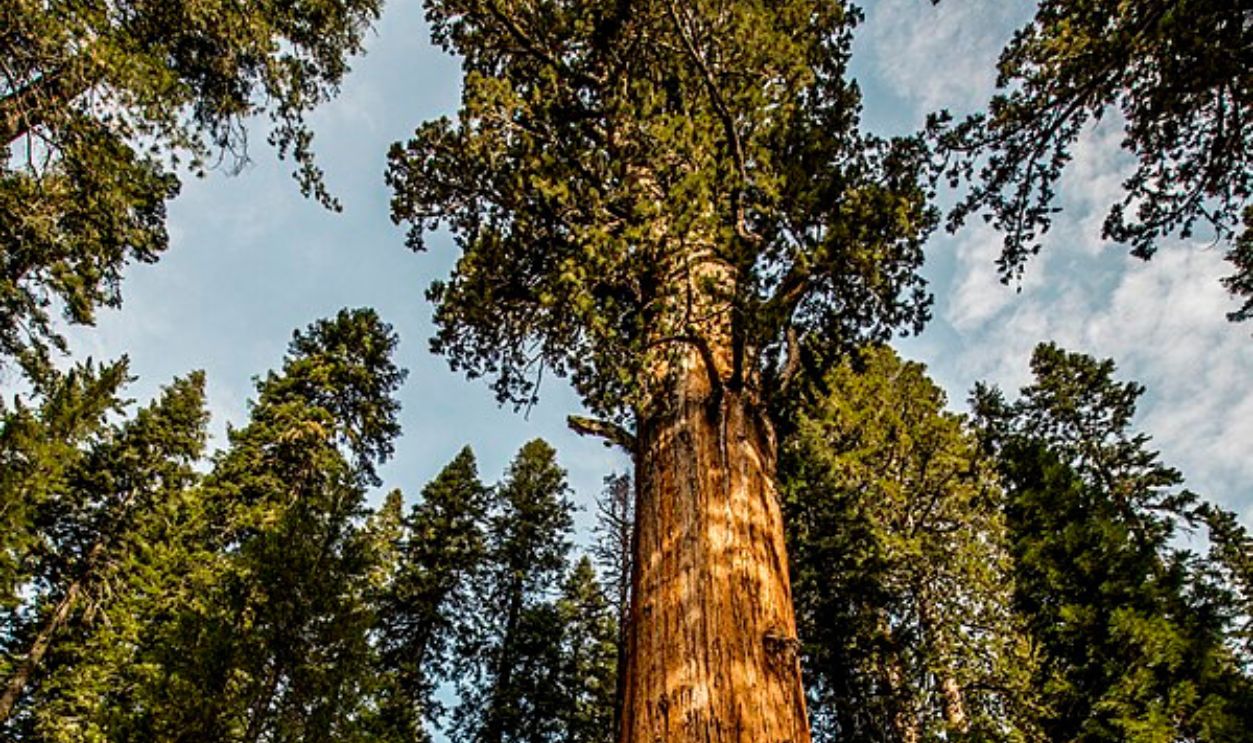 Daniel G Rego, CC0, Wikimedia Commons
Daniel G Rego, CC0, Wikimedia Commons
Defending A Natural Giant
On September 16, 2021, the General Sherman Tree was threatened by the KNP Complex Fire in Sequoia National Park. To protect it, park and firefighting crews wrapped the tree’s base in a specialized protective foil typically used for structures. Finally, the wildfire did not reach the tree, leaving it unharmed.
 Elizabeth Wu, National Park Service, Wikimedia Commons
Elizabeth Wu, National Park Service, Wikimedia Commons
Wildfires Threaten Ancient Giants
While fire is a natural part of a giant sequoia’s life cycle, the increasing intensity of wildfires in California puts these ancient trees at serious risk. Flames now threaten groves across national parks, which includes the one where General Sherman stands.
 Salam2009, CC BY-SA 4.0, Wikimedia Commons
Salam2009, CC BY-SA 4.0, Wikimedia Commons
Nature’s Towering Masterpiece
While the General Sherman Tree is the largest by volume, it isn’t the tallest. That title goes to Hyperion, a coast redwood. It’s also not the widest, as some cypress and baobab trees have a greater diameter, nor is it the oldest; that record belongs to Prometheus.
 National Park Service Digital Image Archives, Wikimedia Commons
National Park Service Digital Image Archives, Wikimedia Commons
Nature’s Towering Masterpiece (Cont.)
Still, at 83.8 meters (275 feet) tall, 7.7 meters (25 feet) wide, with an estimated volume of 1,487 cubic meters (52,513 cubic feet), and aged between 2,300 and 2,700 years, it remains one of the tallest, widest, and longest-living trees on Earth.
 Tuxyso, CC BY-SA 3.0, Wikimedia Commons
Tuxyso, CC BY-SA 3.0, Wikimedia Commons
The World’s Largest Living Organism
General Sheram is not only the largest tree in the world, but it is also the largest living organism by volume on Earth. It surpasses all other known life forms in sheer size, mass, and presence, which makes it a true natural wonder.
 General Sherman Tree Trail: Hiking to the Largest Tree in the World by California Through My Lens
General Sherman Tree Trail: Hiking to the Largest Tree in the World by California Through My Lens
Where Nature And History Meet
Though definitive answers eluded discovery in locating bones within the world’s largest tree, Dr Thorne’s research uncovered a fascinating link between natural history and humanity. For thousands of years, the ancient Sequoia had stood silent, holding a human tale within its heart. Would you have ever imagined that?

